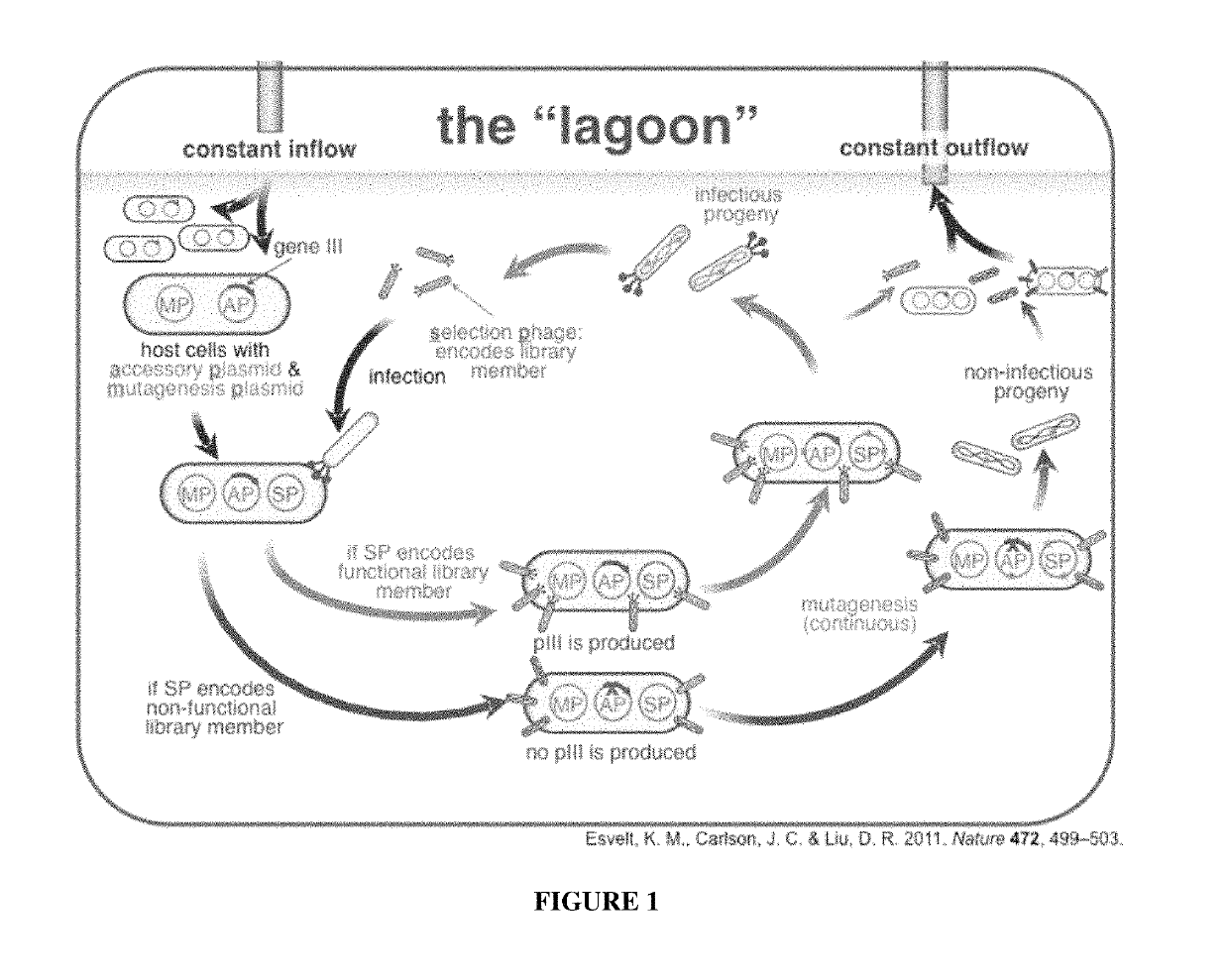Evolution of site-specific recombinases
a site-specific recombinase and site-specific technology, applied in the field of site-specific recombinase evolution, can solve the problems of time- and labor-intensive gene targeting strategies, inability to efficiently modify the target sequence within the genome of the target sequence, and inability to easily modify the target sequence using recombinases, etc., to achieve high specificity and efficiency
- Summary
- Abstract
- Description
- Claims
- Application Information
AI Technical Summary
Benefits of technology
Problems solved by technology
Method used
Image
Examples
examples
[0151]A Phage Assisted Continuous Evolution (PACE) selection for rapidly altering the DNA specificity of Cre recombinase towards a site present in a human genomic safe harbor locus, Rosa 26, was developed. The PACE experiments resulted in Cre variants capable of recombining a substrate with nearly 50% of the nucleotides altered compared to LoxP. We successfully used one of these variants to integrate exogenous DNA into the genome of unmodified human cells.
[0152]A Cre deletion-dependent Accessory Plasmid (AP) was generated (FIG. 2). Expression of the essential phage gene III (gIII) encoding the envelope protein III (pIII) is prevented by the strong transcriptional terminator rrnBT1, which is flanked by two Cre recombinase target sequences (LoxP sites). To lower background expression, the deletion cassette was placed internal to the gIII-encoding sequence. Recombination by Cre results in a deletion of the rrnBT1 terminator and thus to expression of gIII. Cells harboring the native AP ...
PUM
| Property | Measurement | Unit |
|---|---|---|
| volume | aaaaa | aaaaa |
| volume | aaaaa | aaaaa |
| volume | aaaaa | aaaaa |
Abstract
Description
Claims
Application Information
 Login to View More
Login to View More - R&D
- Intellectual Property
- Life Sciences
- Materials
- Tech Scout
- Unparalleled Data Quality
- Higher Quality Content
- 60% Fewer Hallucinations
Browse by: Latest US Patents, China's latest patents, Technical Efficacy Thesaurus, Application Domain, Technology Topic, Popular Technical Reports.
© 2025 PatSnap. All rights reserved.Legal|Privacy policy|Modern Slavery Act Transparency Statement|Sitemap|About US| Contact US: help@patsnap.com



